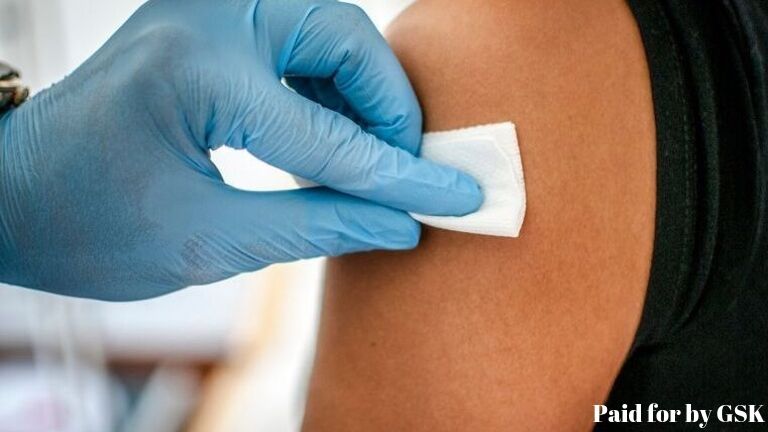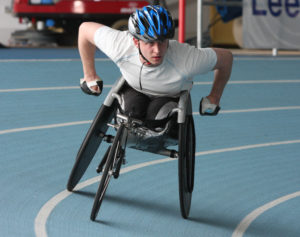Most people think meningitis symptoms always include a rash, but there are earlier flu-like signs that could save your child’s life if they’re spotted in time, says Victoria Lambert
It’s a serious illness that can kill in hours, but new survey findings from GSK shows that few teens, or parents, can spot the crucial early warning signs of meningitis. The research was on 2,000 parents and included 860 teenagers surveyed in total.
In fact, many of these warning signs could be mistaken for tiredness or a hangover in teens. Other meningitis symptoms to be aware of can include:
- Headache
- Fever and chills
- Stiff neck
- Severe muscle pain
- Cold hands or feet
- Pale skin
- Dislike of Bright lights
- Confusion
- A rash – a sign of septicaemia or blood poisoning, not everyone with meningitis gets a rash. If it does show up, immediate attention is required.
But not everyone gets all the symptoms.
Meningitis is inflammation of the lining around the brain and spinal cord – the meninges.
Septicaemia is blood poisoning caused by the same germs and is the more life-threatening form of the disease.
The new survey found that fewer than half of parents (44 per cent) often talk to their teens about potential health issues such as meningitis.
And over a third of teens (34 per cent) look for health information online and on social media rather than speaking to a parent or guardian.
So it is unsurprising that only eight per cent of teens feel confident they would recognise symptoms of meningitis – meaning that the crucial period of time when the bacterial infection could be treated may pass.
‘This is why awareness of early symptoms, such as headache, cold hands and feet, muscle pain, fever and vomiting are so important,’ says Dr Philip Cruz, vaccines medical director for GSK in the UK and Ireland.
DO NOT wait for the rash to appear. It doesn’t always show and is a sign that the disease is advancing rapidly (the progression to septicaemia, or blood poisoning). Act fast and seek medical help as soon as you suspect meningitis.’
Teenagers are amongst the most vulnerable
Teens heading off to university this month are the group most vulnerable to meningitis, after babies. But few, as the survey shows, are even aware of the symptoms.
Emily Styles was just 19 when she contracted meningitis in late December 2013.
Despite the best efforts of doctors, she died on January 1, 2014.
The course of her illness lasted no more than 24 hours.
‘I don’t think we even knew that meningitis could affect older teenagers and adults,’ says her mother Julia, a 52-year-old English tutor and nanny, who lives with her 55-year-old husband Peter, a senior project manager, and their younger daughter Sophie, 22, in Malmesbury, Wiltshire.
‘But even if we had, there was nothing that could be done. It happened so fast. There were no obvious symptoms.’
Aaron Phipps was luckier. The 36-year-old Paralympian (pictured below) from the New Forest, Hampshire, was 15 when he began to feel unwell in January 1999.
‘I came home from school,’ says Aaron, ‘and didn’t feel too well. I had a fever and began shivering.’
Aaron collapsed during the night after being sick twice. His mother noticed a rash developing on her son’s chest. When she pressed a glass against it, the rash stayed put – a classic sign of meningitis.
‘I was rushed by ambulance to Southampton General Hospital,’ says Aaron, ‘and into intensive care. In one hour from my rash developing, I was so ill that my organs started to shut down and I was placed on a life-support machine.’ Aaron didn’t leave hospital for 11 months.
The under-fives are the most at risk group, but experts are concerned that teenagers and young adults do not realise they are the next most likely cohort to be affected
Both Aaron and Emily contracted bacterial meningitis – a serious illness when the outer covering of the brain and spinal cord become inflamed.
Difficult to spot in its early stages, the disease can progress quickly. It often leads to septicaemia, a serious form of blood poisoning and can lead to skin scarring or limb amputations.
Treatment relies on strong antibiotics delivered intravenously; most people do recover but for one in 10, meningitis is fatal.
Despite many parents being aware of the disease – the under-fives are the most at risk group – experts are concerned that teenagers and young adults do not realise they are the next most likely cohort to be affected.
Data from a new study by Populus has found that more than 80 per cent of those aged 16 to 24 do not consider themselves at risk. Moreover, only one in four of this age group knows the signs and symptoms and a third think the disease is not preventable.
The news comes as many young people are preparing to attend university where they may be exposed to the bacterium which causes meningitis for the first time.
Between five and 11 per cent of adults carry the bacteria harmlessly in their throat, reports the University of Oxford Vaccine Knowledge Project, without any signs or symptoms of the disease. In teenagers this rate rises to 25 per cent – and the number of cases of meningococcal disease peaks in the winter each year.
Dr Cruz explains: ‘Meningitis is passed on more easily when big groups come together,’ he says. ‘Transmission of disease is through close contact like sharing cutlery, kissing, sneezing and coughing.’
No single vaccine covers all the strains
Complicating the picture is that bacterial meningitis is caused by more than one type of bacteria. According to the Vaccine Knowledge Project, there are 13 different types of the bacterium. Six of these – types A, B, C, W, X and Y – cause most of the disease cases worldwide, with A, B, C, W and Y most common in the UK.
However, while there is no single vaccine to cover all strains, the MenACWY vaccine which guards against the ACWY strains has become been part of the routine adolescent schools programme, alongside the 3-in-1 teenage booster, and as a direct replacement for the Men C vaccination.
The MenACWY vaccination is also being offered to first-time college and university students up to the age of 25 who haven’t already had the vaccination.
In 2013, the MenB vaccine joined the vaccination schedule and is now offered to babies at two, four and 12 months. It is also available privately.
Recovering after meningitis
Aaron Phipps is now a 36-year-old elite athlete and professional speaker married to Victoria, 37, and the couple have two young daughters.
Had vaccination been available, his life would have been very different as one of the effects of meningitis can be restricted blood flow.
While he was in intensive care, doctors began warning that the tips of his fingers and toes might need to be amputated as they were dying from lack of blood.
‘It was tough,’ says Aaron. ‘Both my legs were amputated below the knee. I lost all my fingers to the knuckle and one thumb.’
Aaron went through ‘lots of rehab’ to get used to using prosthetic legs as well as a wheelchair and was discharged just before Christmas 1999. It was hard work but he got on with it, he says, with the help of friends.
Within three years, Aaron had taken up wheelchair racing and completed the London marathon twice. He was then recruited for the GB wheelchair rugby team and competed at the 2012 London Paralympics. He hopes to compete at Tokyo in 2020.
Aaron appreciates his luck. ‘I was on the brink of death,’ he says, ‘If my mum hadn’t known the symptoms, it could have been a different story for me. It’s important that people learn to know the symptoms and care for each other too. Especially if they are away from home for the first time.’
It is advice Julia Styles would no doubt echo. Ever since the loss of their daughter Emily, the family have dedicated themselves to raising awareness and campaigning for higher uptake of vaccinations.
She adds: ‘I would urge parents to speak to their doctor, nurse or pharmacist about whether their child is protected against all of the common strains of meningitis found in the UK. It could save your child’s life as well as preventing the disease from spreading further.’
Emily had started to feel mildly unwell with flu-like symptoms
Emily Styles was already looking forward to starting a degree course at the University of Winchester in October 2014. She had been working as a teaching assistant at a private school near her home in Buckingham, post A levels.
Christmas had been ‘really good,’ says Julia, and the family were preparing to attend a cousin’s wedding on New Year’s Eve.
But while staying with her boyfriend and his parents a day or so before, Emily had started to feel mildly unwell with flu-like symptoms.
‘She was texting me on December 30th,’ recalls Julia, ‘saying she had a migraine – something she had suffered many times before – and was going to stay in bed and sleep it off.’
That evening, Julia suggested her daughter come home to be looked after, but Emily reassured her parents she was OK. Overnight, however, she was sick and Emily’s condition deteriorated rapidly in the early hours.
There was no rash, not one mark on her. In some cases a rash may never appear at all
An ambulance was called and Emily’s dad rushed to be with her. Paramedics assessed her condition and called for the Air Ambulance.
Peter then travelled ahead to be at the John Radcliffe Hospital Oxford for when she arrived and Julia stayed with Emily, who was airlifted due to the seriousness of her condition, with two senior doctors on board doing their best to save her life.
When they reached the hospital, ‘It was a sequence of worse and worse news,’ says Julia.
‘We knew by midnight that Emily wasn’t coming back to us and family came to say goodbye. She died at 10pm on January 1st.’
Learn the symptoms – meningitis doesn’t always mean a rash.
The family were told that Emily had meningitis at the hospital but until then, they had not suspected the disease.
There was no rash, says Julia, ‘not one mark on her. Now I know that in some cases a rash may never appear at all.’
‘I’ve since learnt,’ she says, ‘that there are other signs you can look out for in adults such as a stiff neck or an inability to put your chin to your chest.’
Apart from not having obvious symptoms that could have been spotted, it’s unlikely Emily realised she was so ill.
‘She was doing what she always did with a headache,’ says Julia, ‘sleeping it off. There was just no way that anyone could have done anything differently and changed the outcome.’
The family’s experience has led to Julia speaking out as often as she can on meningitis, and she urges everyone to learn the signs and symptoms.
If you have any questions or want to learn more about meningitis, visit these sites:
Document number: NP-GB-MNX-ADVR-190001, Date of preparation: September 2019
Relevant Healthista content:
5 steps to a long life (and 2 routes to a shorter one)
Other Healthista content you might like:
The dairy-free probiotic drink that fixed my bloating
4 ways stress is showing on your skin and exactly how to cope
3 breathing techniques this Instagram super yogi swears by
6 healthy salad recipes that will actually fill you up
Like this article? Sign up to our newsletter to get more articles like this delivered straight to your inbox.

























































